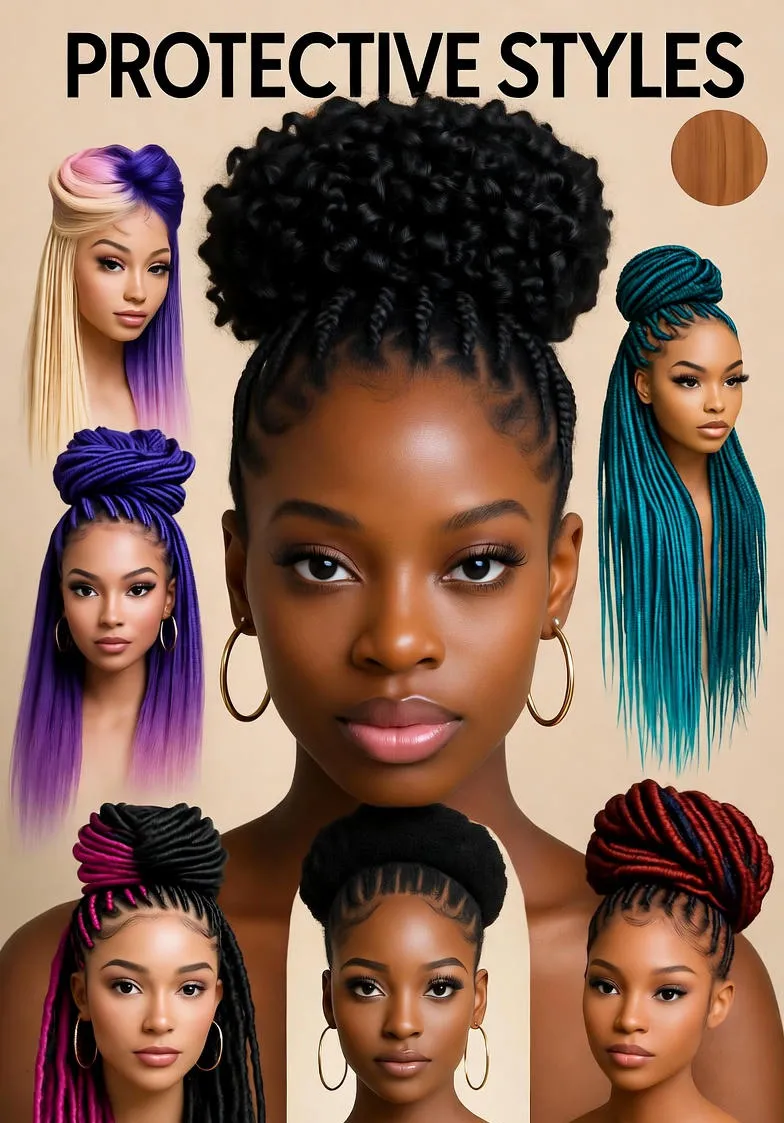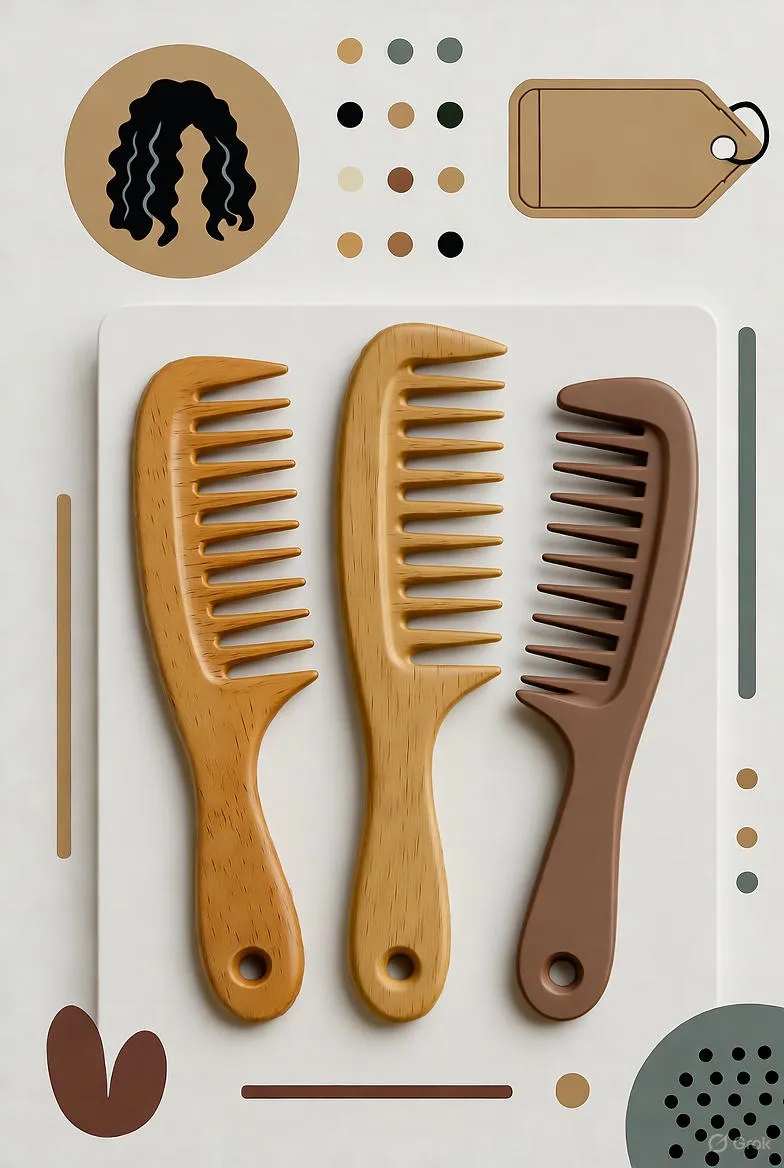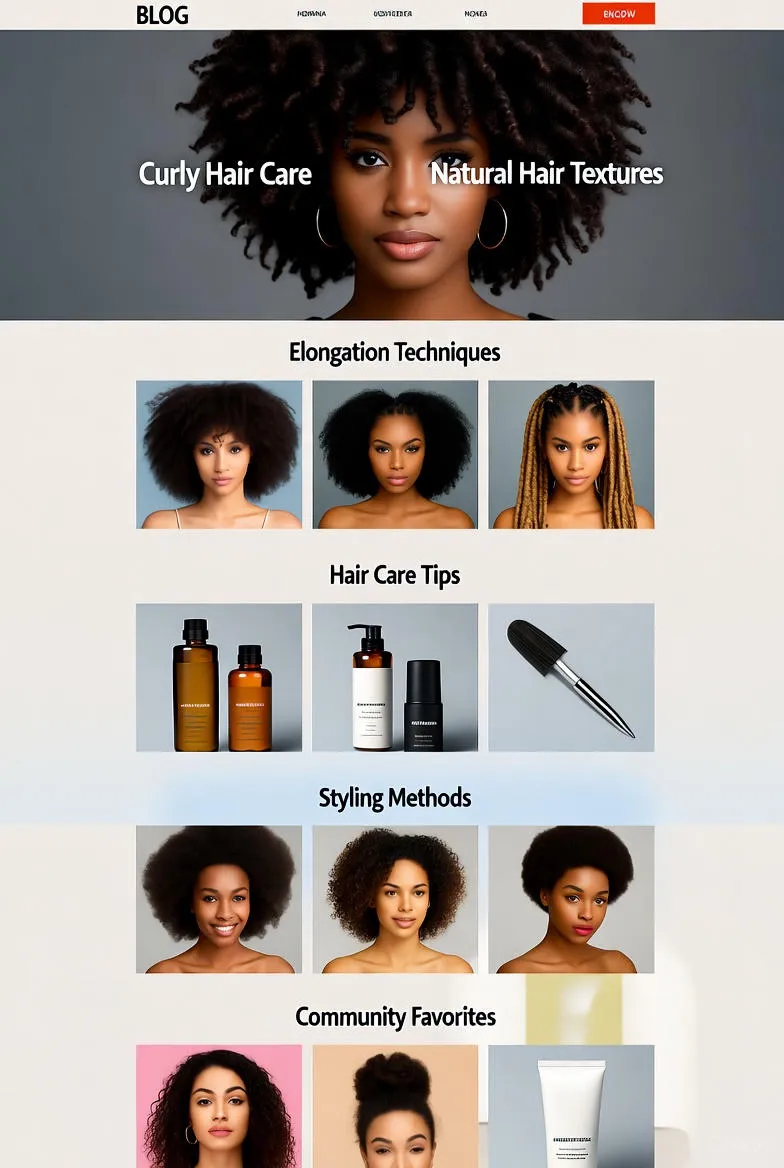Unlocking the Secrets of Protective Styles for Curly Hair: Your Ultimate Guide
Explore protective styles for curly hair like braids, twists, and locs to lock in moisture, prevent breakage, and boost growth. Get tips on installation, maintenance, and choosing the best for your curls.

What Are Protective Styles and Why Do They Matter for Curly Hair?
Curly hair is a beautiful expression of natural texture, but it comes with its own set of challenges. From dryness and breakage to environmental damage, maintaining those coveted curls can feel like an uphill battle. Enter protective styles: a game-changer in the world of natural hair care. These hairstyles tuck away your ends, minimize manipulation, and shield your strands from daily wear and tear. For curly-haired individuals, protective styles aren't just a trend—they're a lifeline for healthy, thriving locks.
At their core, protective styles involve sectioning and securing the hair in ways that promote length retention and moisture preservation. Think of them as armor for your curls, allowing you to go weeks without combing or brushing, which drastically cuts down on friction and split ends. Whether you're rocking tight coils, loose waves, or everything in between, adopting these styles can transform your hair routine from frustrating to fabulous.
The Top Benefits of Embracing Protective Styles
Why go the extra mile for a protective style? The perks are endless, especially for curly hair prone to shrinkage and fragility. First and foremost, they reduce breakage. By keeping your ends tucked away, you're preventing the constant rubbing against clothing, pillows, and even your own hands that leads to frayed tips.
Moisture retention is another superstar benefit. Curly hair naturally struggles with sebum distribution down the shaft, but a protective style creates a barrier that locks in hydration from your favorite deep conditioners and oils. Over time, this can result in softer, more defined curls that bounce back stronger.
Don't overlook the growth factor. Less manipulation means less shedding, giving the illusion—and reality—of longer hair. Plus, these styles offer versatility: low-maintenance days at the office or glam nights out, all without compromising your curl pattern.
- Time-saving: Install once, enjoy for weeks.
- Scalp health: Easier access for massages and treatments.
- Style experimentation: Try bold colors or accessories without commitment.
Exploring the Best Protective Styles for Curly Hair
With so many options, choosing the right protective style can feel overwhelming. Let's break down some crowd-favorites, tailored specifically for curly textures. Each one offers unique advantages, so consider your lifestyle, hair length, and desired upkeep when deciding.
Box Braids: Timeless and Versatile
Box braids are the gold standard for protective styling. Named for their neat, square-parted sections, these braids extend your natural hair with synthetic or kanekalon extensions, creating a sleek, uniform look. For curly hair, they're ideal because they add weight that stretches out shrinkage without altering your coils underneath.
Installation typically takes 4-8 hours, depending on density and length. Pros include durability (up to 8 weeks) and endless styling options—from updos to half-down vibes. To keep them curly-friendly, opt for jumbo sizes to reduce tension on the scalp, and always moisturize your roots pre-braiding.
Twists: Effortless Elegance with a Twist
If braids feel too structured, two-strand twists (or senegalese twists with extensions) bring a softer, more fluid aesthetic. These styles involve parting the hair into sections and twisting pairs together, mimicking your natural curl pattern for a seamless blend.
Perfect for medium to long curly hair, twists are quicker to install (2-5 hours) and gentler on edges. They shine in humid climates, holding up without frizz, and can be accessorized with cuffs or beads for personality. A pro tip: Use twisting gel infused with shea butter to enhance shine and definition.
Cornrows: Roots of Tradition and Simplicity
Cornrows trace back centuries, offering a no-extensions-needed option that's budget-friendly and scalp-soothing. By braiding close to the scalp in rows, they lay flat and secure, making them a staple under wigs or for athletic activities.
For curly hair, cornrows preserve moisture by keeping strands compact. They're low-tension, reducing the risk of traction alopecia, and take just 1-3 hours to achieve. Experiment with curved patterns or zigzags for a modern twist on this classic.
Faux Locs: Boho Vibes for the Bold
Craving that free-spirited, festival-ready look? Faux locs wrap your hair in faux dreadlock extensions, blending crochet techniques with wrapping for a textured, effortless style. They're surprisingly lightweight for curly bases, allowing breathability while protecting ends.
Installation ranges from 4-7 hours, with longevity up to 6 weeks. The key to curly compatibility is choosing soft, curly-ended locs that don't clash with your texture. They're not just protective—they're a statement piece that turns heads.
Bantu Knots: Quick and Cute Mini Styles
For shorter curly hair or a temporary fix, bantu knots deliver. Twist sections of hair into coils and knot them against the scalp, creating a graphic, symmetrical pattern that's as functional as it is fashionable.
Done in under an hour, they're reversible—unravel for twist-outs that amplify your curls. Ideal for heat-free styling, they promote even growth and are gentle enough for frequent use.
Wigs and Crochet Braids: Instant Transformations
Not ready for a full commitment? Wigs and crochet braids offer the protective perks without altering your natural hair much. Glue or clip-in wigs sit over cornrows, while crochet involves looping extensions onto braids for volume and bounce.
Both are curly hair heroes: wigs allow full rest periods, and crochet adds playful curls that complement your own. Switch them up seasonally for variety without stress.
How to Choose the Perfect Protective Style for Your Curls
Selection starts with self-assessment. Consider your hair's porosity—high-porosity curls thrive in looser styles like twists, while low-porosity loves the grip of braids. Length plays a role too: shorter hair suits knots and rows; longer benefits from extensions.
Lifestyle audit: Active folks might prefer buns or cornrows for sweat resistance, while desk jockeys can indulge in intricate designs. Budget-wise, DIY twists save cash, but professional installs ensure precision.
Consult your curl type via the Andre Walker system: Type 3 waves pair well with lightweight faux locs; Type 4 coils demand nourishing preps like protein treatments to fortify strands.
Step-by-Step Guide to Installing Protective Styles at Home
DIY doesn't have to be daunting. Start with detangling: Section damp hair, apply a leave-in conditioner, and finger-detangle gently. Prep tools: rat-tail comb, clips, edge control, and extensions if needed.
For braids or twists, part evenly, moisturize each section with a water-based spray, and seal with oil. Work in a well-lit space, taking breaks to avoid fatigue. Tension is key—firm but not painful—to prevent slippage.
Post-install, a silk scarf wrap overnight sets everything. If outsourcing, research stylists via reviews, bringing inspo pics and communicating your texture needs clearly.
Maintenance Mastery: Keeping Your Protective Style Fresh
The magic happens in upkeep. Weekly scalp massages with diluted tea tree oil stimulate circulation and combat itchiness. Wrap in satin at night to preserve shape and reduce friction.
Moisturize strategically: Light spritzes for roots, heavier creams for edges. Avoid heavy products that weigh down extensions. Every two weeks, refresh with a co-wash, focusing on the scalp without disturbing the style.
Signs of trouble? Itching signals dryness—amp up hydration. Loose sections? Touch up with gel. And remember, less is more: Skip daily touching to maximize protection.
Avoiding Common Pitfalls in Protective Styling
Even pros slip up. Over-tightening leads to headaches and hairline recession—always err loose. Neglecting prep? Dry hair snaps easily, so deep condition 48 hours before.
Extensions mismatch causes tangles; match texture and weight to your curls. Post-style shock from sudden manipulation? Transition gradually with pineapple ponytails.
Longevity myths: Not all styles last forever—listen to your hair's cues for takedown, ideally every 4-6 weeks to prevent matting.
Real Talk: Testimonials from Curly Queens
Meet Aisha, a 4C enthusiast: "Box braids saved my sanity during grad school—grew 4 inches without trying!" Or Jordan, type 3B: "Twists let me embrace my waves without heat damage." These stories underscore the empowerment of protective styles.
Conclusion: Embrace Protection, Elevate Your Curls
Protective styles are more than hairstyles; they're an investment in your curly crown's future. By shielding, nourishing, and celebrating your texture, you'll unlock lengths and confidence you never knew possible. Ready to dive in? Pick your style, pamper those curls, and watch the transformation unfold. Your hair's best chapter starts now.
(Word count: 1,248)


